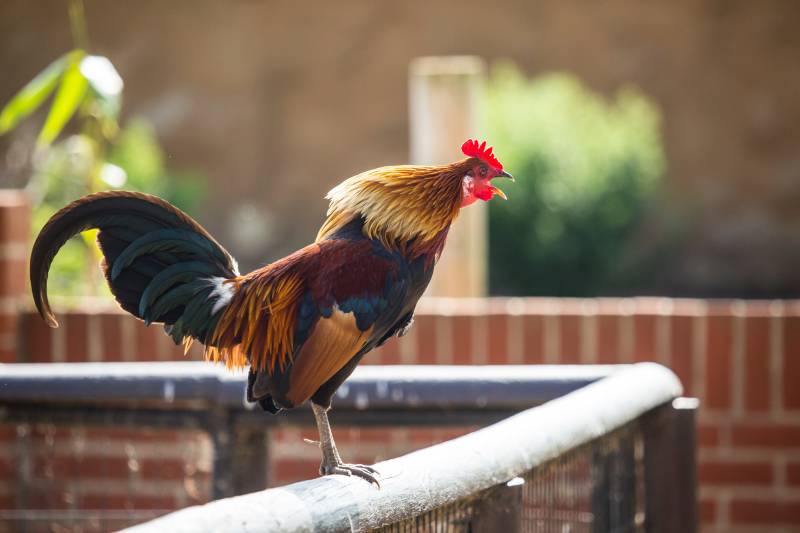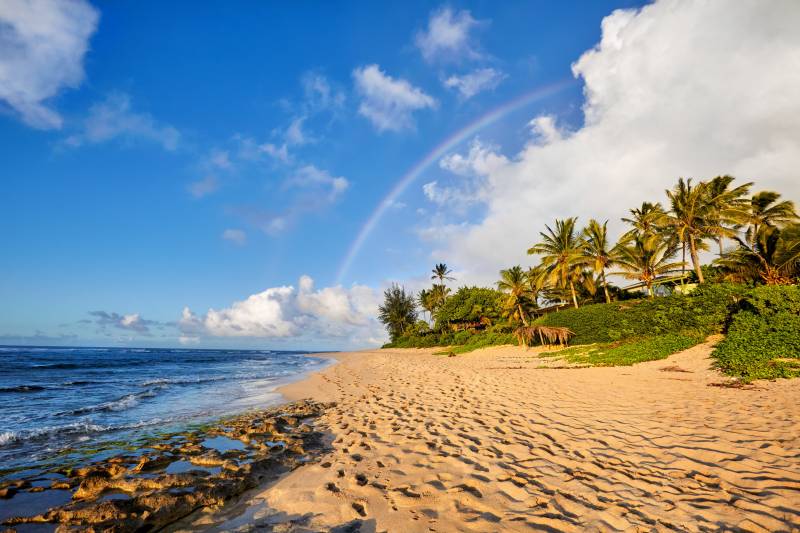Things to Consider Before Moving to Hawai‘i
As I dropped off my vehicle at the port to have it shipped to O‘ahu, I asked the clerk the question, “How many vehicles are dropped off a day?” “Maybe 60-80, and most of ’em come back” she replied with a laugh. And there you have it. And so I wasn’t surprised to recently read that more people are moving away from Hawai‘i, than moving to the state.
If you do decide to move to Hawai‘i, I want you to be grateful for seizing the opportunity. And since the experience of vacationing in Hawai‘i is vastly different than setting up a full-time residence, my goal for this article is to highlight some factors to consider before deciding to move to Hawai‘i. First . . .
1. High Cost of Living
Most important thing to be aware of – living in Hawai‘i is expensive. First is housing. Whether renting or buying, you get a lot less here for your money than most places on the mainland. Also, though Amazon delivery has definitely helped lower some expenses, most things still cost more. The reason is most items sold here are shipped or flown in. From gas to milk, from services like the dry cleaner or the car wash, plan on paying more for almost everything. I’ve been told average item costs 20% more here than the mainland. But in my experience, the price difference between many of my regular purchases here compared to Seattle is much more than 20%. Also be aware, Hawai‘i has a state income tax.

2. Relocating With a Pet Is Complicated
These days, the Hawai‘i Government strictly guards the state ecosystem against the invasion of non-native animal and plant species, and pets suspected to be carriers of disease. Therefore, it’s important you plan accordingly when moving to Hawai‘i with your pet(s). You can choose either a 120-day quarantine or a 5-day (or less) quarantine. Quarantine is done on O’ahu. There is a lot to know on this topic, so read more about pet quarantine here.
3. Wildlife is a Part of Life
If you are a wildlife enthusiast, you’ll likely love this aspect of Hawai‘i. Across the islands, you’ll find various species of wildlife, some endemic to only a single island. Regardless of where you choose to live here, wildlife will be a part of your daily life. Most common will be a variety of birds and geckos, but depending on your activities you can often see whales, turtles, tropical fish, mongoose, and wild pig. Here are some favorite species of wildlife. However, the author of that article missed a special one . . . Wallaby. Yep, it is estimated there are 40 Wallaby living on O’ahu. If you move to O’ahu, you might get lucky and catch a rare look at one.
3b. Mind the Roosters

Prior to my 2017 trip to O’ahu, I had always stayed in Waikiki. Thus, I had no idea about the wild chickens. Both hens and roosters can be incredibly beautiful, however, if you move to Hawai’i and want to live in a quiet neighborhood, you definitely need to keep the roosters in mind — as these fellas are noisy. And this is coming from a person who lived on a blueberry farm as a kid and had chickens. Here in Hawai’i, it’s not just the morning call. If you live in an area highly populated with chickens, there’s a good chance of a rooster crowing at any time of day.
4. Traffic Can be Heavy in Hawai’i
Depending on which island you choose, if you are moving to Hawai’i from a big city with the hopes of escaping traffic, think again. For O’ahu, traffic is often heavy – especially during commute hours and weekends. On O’ahu, there is light rail under construction but the first section is not scheduled for completion until 2020. Because of limited land, mountains and logistics, it appears our traffic problem is not going away any time soon. Depending on time of day and area, you can also experience heavy traffic on Maui and Kaua‘i.
5. The Pleasure of Island-Hopping

After you’ve moved to Hawai’i, sooner or later you might experience, “Island Fever.” One remedy for this is to go explore a different island of the Hawaiian archipelago. Fortunately, Hawaiian Airlines, Southwest, and Mokulele airlines make this very easy (and pretty affordable) to do. For a getaway, I highly recommend it. Thus far, I’ve been to O’ahu, Maui, Moloka’i, and Kaua‘i, and each island truly has its own unique characteristics. Seeing each island for its own uniqueness can make a person grateful for home and the special beauty of each Hawaiian island. Lastly, if you do island hop, be sure to get a window seat — the views are incredible.
6. Hawai’i Driver’s License = Kama’aina
One of the first things to do after you’ve settled in is to get your Hawai’i driver’s license. As a holder of the local license, you qualify for discounts popularly known as Kama’aina discounts. This discount is usually 10% and for me, it always feels good when I get it. Not all places honor it, but always remember to ask when buying anything at local shops, restaurants and tourists attractions. So what does kama‘aina means? Literally, it means, “child of the land,” but many simply define it as “resident” or “local.”
7. Insects Are Abundant

It’s best you’re prepared for the presence of an abundant amount of insects when you move to Hawai’i. Irrespective of how clean your residence is, there is a high probability you’ll eventually be paid a visit by some species. Most likely cockroaches or ants, but centipedes and millipedes are also common.
After moving to O’ahu, I quickly learned that most locals just accept insects as a part of life here. Cockroaches can be a nuisance, and it is not surprising to see them running (sometimes flying) around at night. And unfortunately, mosquitoes are also abundant in certain parts of Hawai’i. Be prepared, especially if you enjoy hiking. And a local tip that I, fortunately, have yet to use is to keep small bottles of ammonia in different parts of your residence. Thus, if you are bitten by a centipede, quickly apply a bandage soaked with ammonia. Supposedly this greatly reduces pain and recovery time.
Personally, insects have been much less of a problem than I expected. So much less that I’ve opted not to use pest control at my residence. So choose your own method to deal with them. And like most things in life, with patience, you will likely get used to the insects. Maybe even appreciate the important role they play in the ecosystem.
8. Casual Dress Code is Common
A favorite of mine. Thankfully, due to the climate here, the dress code is mostly casual. And unless you are in Honolulu, it’s quite rare to see people wearing typical “corporate” attire. I’d describe the dress code here as comfortable and diverse. So dress for the weather and what you enjoy wearing. And “flip flops” or “thongs” are known as “slippers” here.
9. “Island Time” Is a Reality
If you are a punctual person like I am, I do not recommend you change your ways. However, the chance of you enjoying life here will greatly increase if you understand and accept “island time.” What is “island time?” Simply, things are often done at a slower pace, and that 12 pm casual lunch meeting, may not start until 12:10, 12:15. . . . 12:20. For me, moving here single and without a job, my first experience with “island time” was going on a few dates. I’d always show up on time or a little early, and end up waiting a bit. “Island time” started to dawn on me then, but really hit home when a woman said “locals are going to find it weird if you show up to their house early. Best to always be a little late so they don’t get stressed.” Now, this isn’t a steadfast rule, but if the person you are meeting is late. . . relax and enjoy the beauty of Hawai’i.
10. Getting a Job Before Moving is Hard & Plan on Lower Income
Due to the high number of people who quickly change their mind about living in Hawai‘i, many local companies are skeptical about hiring people who just moved here. Also, and this was a shock to me, a similar job position generally pays less here than on the mainland. On O’ahu, where I live, I’ve spoken to numerous transplants who complain about the lower salaries here and have been told it’s worse on other islands. The reality is Hawai‘i residents make less than their mainland counterparts in almost every industry. Thus, be prepared that you may likely earn less here than you did on the mainland.
11. Experiencing Aloha and Mana

Aloha. . . “The Breath Of Life Given Face To Face.” If you make an effort to embrace the history, culture, and locals of Hawai’i, you’ll discover friendship and love shared by many living here. The same can be said about “Mana” – something I’ve experienced while sitting quietly on a surfboard. I highly recommend you leave all your expectations and most of your mainland “conditioning” on the mainland. Move here with an open mind and heart and gratefully accept all that Hawai’i Life has to offer.
Made the decision to move to Hawai’i? Want to buy a house or condo here? Simply call me directly at 808 354-5772 or click here. I look forward to helping you achieve your real estate goals. I’m here to serve you.



Jewleeam@yahoo.com
December 28, 2019
I think you did a great job of hitting the main points of island life. I lived on kauai in the late 90s. I plan on retiring on the Big island next year. Living there was a life changing experience.
MB
October 23, 2020
All good tips; however, if you do the more expensive rabies test on the Mainland and you plan to arrive during business hours on a weekday when the vet is at the airport is in you won’t have to quarantine your pet. I did it that way and it was well worth it. It will be less expensive in the long run too because even though the rabies test is more expensive (& not all vets do it) the boarding costs of quarantine will cost much more. Just make sure you have all your documentation done exactly as they tell you to do it, and have the vets sign everything in blue (which they don’t tell you, but is a requirement).